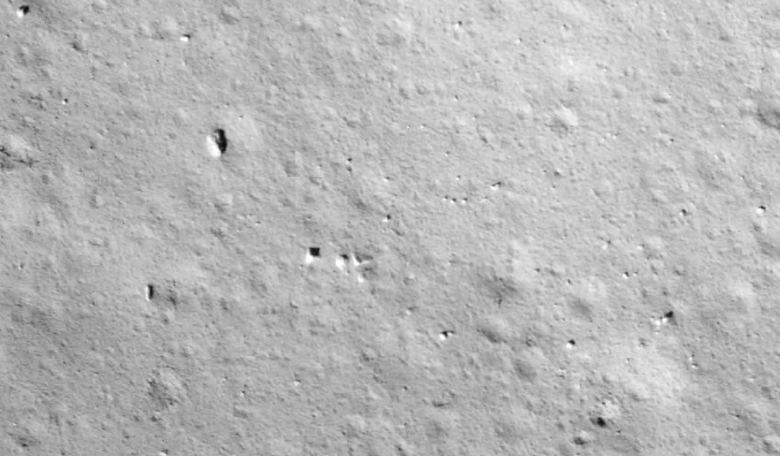At around 23:11 Beijing time (15:11 GMT) on 1 December 1, China's Chang'e 5 probe successfully landed on the nearside of the Moon, touching down at 51.8 degrees west longitude and 43.1 degrees north latitude; a region known as Oceanus Procellarum.
Although cameras recorded the descent, footage was not broadcast live to the world.
According to Chinese state media, the lander has carried out a series of status checks and settings, and is preparing to start work on the surface of the moon.
Scientific instruments installed on the lander include cameras to survey the landing site and sampling area, an infrared spectrometer to detect the material composition of the sampling area, and equipment to probe subsurface structure.
Chang'e 5 is expected to collect around two kilograms of lunar rocks and soil to help scientists learn about the Moon's origins, formation and volcanic activity on its surface.
The collection will take place over the course of one lunar day – the equivalent to around 14 Earth days.
Chang'e-5 is the world's first moon-sample mission in more than 40 years, and Chinese space engineers have made elaborate plans for possible challenges ahead, said Peng Jing, deputy chief designer of the Chang'e-5 probe from the China Academy of Space Technology under the China Aerospace Science and Technology Corporation.
"We designed two methods for the spacecraft to collect samples. One is to sample the lunar surface, and the other is to drill underground. The two methods could increase the chance of getting more diverse samples," said Peng.
Once the surface mission is complete, the lunar samples will be returned to Earth via the ascender, which will take off and dock with the orbiter-returner combination in orbit.
According to Peng, Chang'e-5 will carry out an unmanned rendezvous and docking in a lunar orbit around 380,000 kilometres away, a first in the history of space exploration.
The orbiter containing the lunar material is programmed to land in northern China's Inner Mongolia region later in December. The returner is scheduled to reenter the atmosphere and land at Siziwang Banner in north China's Inner Mongolia Autonomous Region.
If the return journey is successful, China will be only the third country to have retrieved samples from the Moon, following the United States and the Soviet Union in the 1960s and 1970s.











